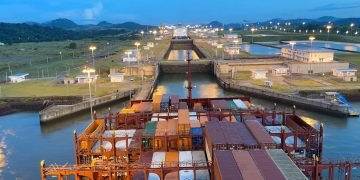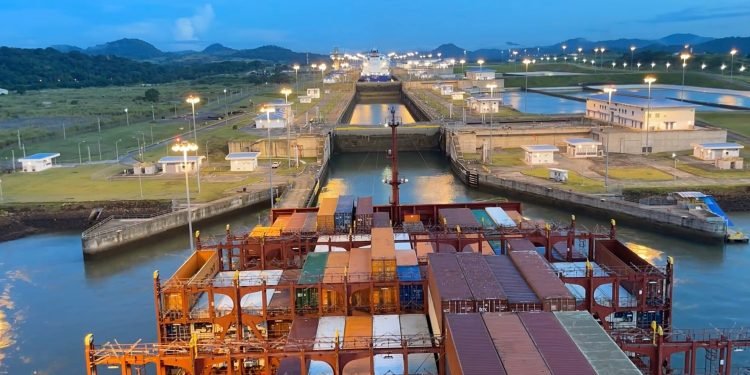By Maria Kalamatas | July 16, 2025
Panama City – Global shipping networks are feeling the strain as extreme drought conditions force the Panama Canal Authority to limit transits, draft sizes, and daily vessel slots. What was once a reliable shortcut for maritime trade has now become a chokepoint shaking the confidence of global operators.
“We’ve never faced a disruption of this magnitude outside of a political conflict,” says Jorge Rivas, operations manager at a major freight forwarding firm in Miami. “Delays of five to ten days are now routine, and there’s no guarantee of improvement.”
Rainfall Deficit Paralyzes Key Waterways
The root of the crisis lies in an extended dry season. Gatun Lake, the canal’s primary water source, has dropped to critically low levels not seen in over two decades. The result: authorities have capped daily transits at 24 vessels, down from the usual 34–36.
Large container ships, particularly Neopanamax vessels, are being asked to reduce loads or reroute entirely — adding thousands of nautical miles to their voyages. The financial toll is significant, particularly for just-in-time delivery models.
Asia-America Routes Rerouted
Major shipping lines are now bypassing Panama in favor of alternative routes like the Suez Canal or Cape of Good Hope. While these detours offer reliability, they extend timelines by up to two weeks.
“Our Asia-to-East Coast schedule is in shambles,” said Lin Mei, logistics director at a Hong Kong-based electronics exporter. “The cost of delays is one thing, but the unpredictability makes inventory planning nearly impossible.”
Surging Freight Costs Spark Alarm
Freight rates for eastbound transits via Panama have spiked by more than 40% in under three weeks. Industry analysts warn that continued pressure on the canal could trigger a cascading effect on consumer prices, especially in the U.S. and Latin America.
Insurance firms are also adjusting risk assessments, citing the growing climate exposure of key maritime arteries. Some carriers are preemptively adjusting seasonal contracts to account for further delays through Q3 and Q4.
Climate Reality Meets Supply Chain Fragility
Environmental observers believe this is a wake-up call. “We’re seeing the early consequences of infrastructure designed for a 20th-century climate,” explains Dr. Helena Duarte, a specialist in logistics resilience. “Redundancy planning is no longer a luxury — it’s a requirement.”
As the industry waits for rain and long-term solutions, stakeholders across the globe are recalibrating their expectations — and their routes.























